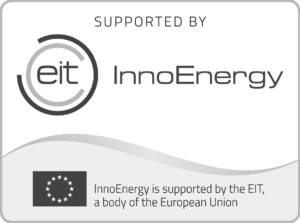28.02.2020
Six steps for an advantageous environment for health tech testing
During the seminar, members of the health community discussed what steps should be taken to create an advantageous environment for the testing of technological solutions. Suggestions to improve the current situation included an assessment framework by funders, mapping testing opportunities/living labs and the need for a clear vision from the persons conducting the tests.
The seminar was organised by the Connected Health cluster led by Tehnopol Science Park to search for answers to questions such as: what obstructs testing, what are the legal issues surrounding the testing of digital solutions and what supportive mechanisms should be in place for testing technological solutions?
Cluster Manager Piret Hirv confirmed that the discussion provided good input for planning actions. “The discussion helped determine what action should be taken to improve testing conditions,” said Hirv. “Advancing testing conditions is also one of the strategic directions of the Connected Health Cluster and we are currently working on making good ideas come to life.”
Participants highlighted that a test environment is a judicial area as well as a physical place. The situation is currently fragmented and IT people developing a new solution or healthcare professionals with a good idea do not know who to turn to in order to get an overview of the situation – funding is coming from one source, data protection from another and patients from a third source.
Startups would benefit greatly from an assessment framework designed for funders (such as the Estonian Health Insurance Fund) to check proactively if all the required authentication has been acquired or all the clauses assessing impact have been met.
However, testers of technologies need to have quite a clear vision of what and when they want to test because the creation of testing opportunities requires specialists and their time. This leads to the question of the need of resources, and smaller hospitals often cannot allocate resources. For larger hospitals, it is necessary to identify their motivation to provide a test environment and determine the relevance of testing for the hospital. It is often easier to carry out certain projects within a hospital due to bureaucratic and legislative restrictions. The desire and will to create and provide a test environment must come from the managerial level, not only from doctors and specialists. As such, hospitals would probably be better suited to testing final solutions.
Participants brought out six ways to make Estonia a better environment for testing technological solutions:
- mapping of demand from startups and supply of living labs because startups have no idea where to start looking for partners and get information on possible test environments/living labs
- adjustment of the judicial area to facilitate faster testing of innovative solutions
- clear assessment framework
- clear vision on behalf of testers and clarity regarding business models
- safe environment for pilot projects
- intention of partners to take part in tests and provide feedback
Seminar Estonia – A Good Place for Testing Tech Solutions? organised by the Connected Health Cluster, led by Tallinn Science Park Tehnopol, took place at Tallinn Health Care College on 20 February. The seminar was held with the support of the European Regional Development Fund.
Click here for a gallery of the event.
Click here for a video recording of the seminar.
The Connected Health Cluster, led by Tallinn Science Park Tehnopol, is Estonia’s largest health technology community, bringing together health service providers, health technology companies and all other relevant stakeholders. The cluster’s support enables domestic cooperation projects and the export of health technological solutions to other countries.
The cluster’s activities are co-financed by Enterprise Estonia.












